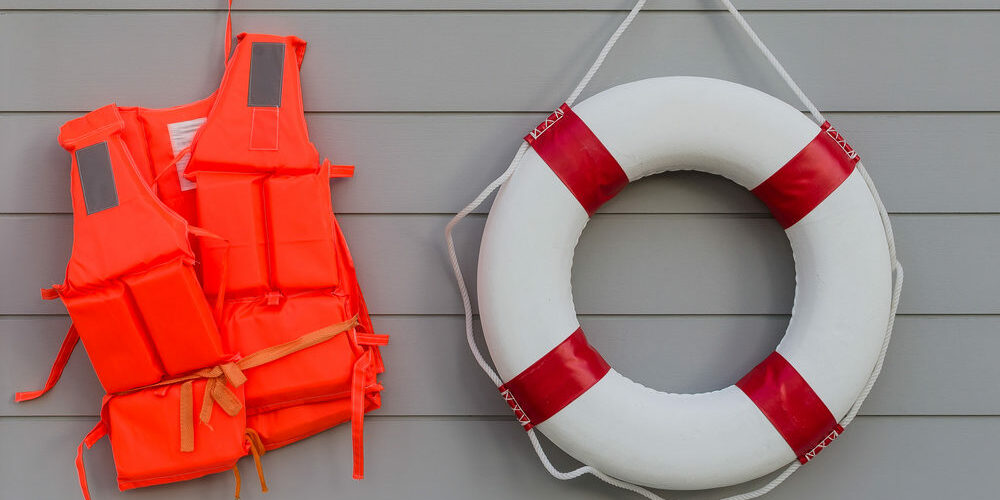As you’re gearing up for boating season, now is the perfect time to take a look at your safety equipment and assess what you might need to upgrade or add. Make sure you’re checking the following basics before getting out on the water:
— Inflatable life jackets and tethers
Check your inflatable lifejackets according to the manufacturer’s recommendations. For Spinlock, they recommend annual inspections at a minimum, every three months with more frequent use and offer instructions on their website. For Mustang, they recommend performing a visual inspection and an air retention test every six months or more frequently if it’s a high-use product.
— Passive PFDs
For day-to-day wear on the boat and in the dinghy, passive PFDs can be more comfortable than inflatable jackets. They generally have an expected lifespan of around 10 years. If you want to check buoyancy, put your PFD on, jump in the water and tilt your head back. If your chin stays out of the water, it’s still fine. If your mouth is underwater, it needs to be replaced.
— Fire Extinguishers, Smoke and Carbon Monoxide Detectors
Check the expiration dates of all equipment and test your batteries. Make sure you have an adequate number of carbon monoxide detectors and fire extinguishers. We have them mounted in the galley, salon and each cabin, with the addition of a fire blanket in the galley.
— Flares
When it’s something you’re—hopefully!—never using, you may forget to check and replace your flares. Pyrotechnic signalling devices expire 42 months after manufacture, according to the USCG regulations. This means you should be replacing your flares roughly every third boating season. You can keep expired ones for backup or contact your local fire department for advice on disposal.
It’s certainly easy to go down a rabbit hole when researching safety equipment and outfitting your boat. For us personally, as our cruising distances increased and we headed further offshore, we’ve invested more of our budget into safety equipment. Here are some of the things we’ve added that may not be must-haves, but are certainly nice-to-haves, depending on where you’re headed:
— AIS
We added AIS (automatic identification system) towards the end of our time on Lake Ontario. Ours was a transceiver and we felt it was well worth the extra money versus just having a receiver. It was nice to be able to see traffic on our chart plotter, as well as use the CPA (closest point of approach) and TCPA (time to closest time of approach) features of our MFD.
— Man Overboard Recovery
We had a horseshoe buoy mounted on our back rail, in addition to a floating throw rope for coastal cruising. For longer distances, we’ve added more extensive man overboard recovery equipment, including a Lifesling, MOM8 Man Overboard Module and personal AIS beacons in each inflatable lifejacket.
— EPIRB
Our EPIRB (Emergency Positioning Indicating Radio Beacon) has AIS functionality and is installed in the cockpit. When activated, it emits a distinctive radio distress signal that can help search and rescue find you.
— SOLAS Cat 1 Offshore Flare Kit
Another upgrade was trading in our Orion flares for a SOLAS Cat 1 Offshore Flare Kit.
— Life Raft
Another item that I hope I never see unpacked or used: the life raft. We chose an 8-man Viking offshore life raft that is serviceable around the world.
— IridiumGO
For offshore communications, tracking, weather GRIB files and SOS capability, the IridiumGO has been invaluable. Until Starlink is fully operational and reliable around the world, we’ll continue to depend on this whenever we head offshore.








